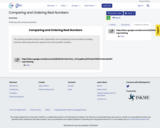
Ordering real numbers practice
- Subject:
- Mathematics
- Material Type:
- Activity/Lab
- Author:
- Lana Reed
- Date Added:
- 05/10/2022

Ordering real numbers practice

Introduction:The atmosphere consists of many different layers that each have unique characteristics. Other things in day to day life also consist of layers that have unique characteristics, like beds, burritos, and sandwiches. Task: Draw a picture to compare the layers of Earth’s atmosphere to something else that has layers. For example, you could draw a cheeseburger and write “The lettuce on the cheeseburger is like the Mesosphere, because they are both the coldest layers.”

Explore a NetLogo model of populations of rabbits, grass, and weeds. First, adjust the model to start with a different rabbit population size. Then adjust model variables, such as how fast the plants or weeds grow, to get more grass than weeds. Change the amount of energy the grass or weeds provide to the rabbits and the food preference. Use line graphs to monitor the effects of changes you make to the model, and determine which settings affect the proportion of grass to weeds when rabbits eat both.

Performing complex number arithmetic Mathematics Instructional Plans (MIPs) help teachers align instruction with the 2016 Mathematics Standards of Learning (SOL) by providing examples of how the knowledge, skills and processes found in the SOL and curriculum framework can be presented to students in the classroom.
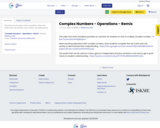
This resource includes a Khan Academy video, two truths and a lie activity, and a follow-up review game.
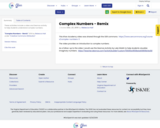
These activities include a video and Desmos activity to help students understand complex numbers.

This is a VDOE Webinar, Complexity for All: Scaffolding Academic Tasks, recorded on November 9, 2020.

A lesson plan to introuduce types of technology and basic hardware to kindergarten students.

Website resource to help early CS learners identify parts of a computing system

This is a 6-day unit focusing on Components of Fitness and Skill Related Components. Students will rotate through each station (1 per class block). Days 4-6 students will be involved in creation an exercise video using the information.

This worksheet is used to help middle school Health and Physical Education students have a better understanding of goal setting.

Students compose and notate short melodies using their names.

Students compose and notate short 4/4, 3/4, and 6/8 rhythms across multiple class periods.

Students compose and notate short rhythms in 4/4, 3/4, and 6/8 meters across multiple class periods.

Solving problems involving area and perimeter of composite figuresMathematics Instructional Plans (MIPs) help teachers align instruction with the 2016 Mathematics Standards of Learning (SOL) by providing examples of how the knowledge, skills and processes found in the SOL and curriculum framework can be presented to students in the classroom.

Exploring Composition of Functions Mathematics Instructional Plans (MIPs) help teachers align instruction with the 2016 Mathematics Standards of Learning (SOL) by providing examples of how the knowledge, skills and processes found in the SOL and curriculum framework can be presented to students in the classroom.

Students evaluate functions to make a connection to compositions of functions. Students then practice finding compositions of functions. Students end the activity evaluating compositions of functions both algebraically and graphically with a challenge that includes multiple compositions.
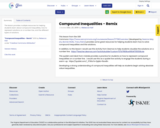
The lesson provides multiple resources for helping students learn about compound inequalities, how to represent solutions on a number line, and the different types of solutions.
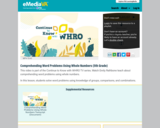
This video is part of the Continue to Know with WHRO TV series. Watch Emily Rathbone teach about comprehending word problems using whole numbers.
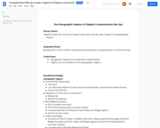
Fourth grade students are learning about the five geographic regions of Virginia and their characteristics. These comprehension “mix-ups” are a great way to monitor students’ understanding of the content along with checking reading comprehension.
Inform students that as they read the paragraphs, there is ONE word in each paragraph that is a “mix-up” (it is incorrect).
Teachers can choose to do these multiple ways in their classroom:
Whole group - teacher reads aloud the paragraph and students find the “mix-up”
Small group - the teacher works with a small group of students, modeling fluent reading and finding the mix-up
Students work in partners